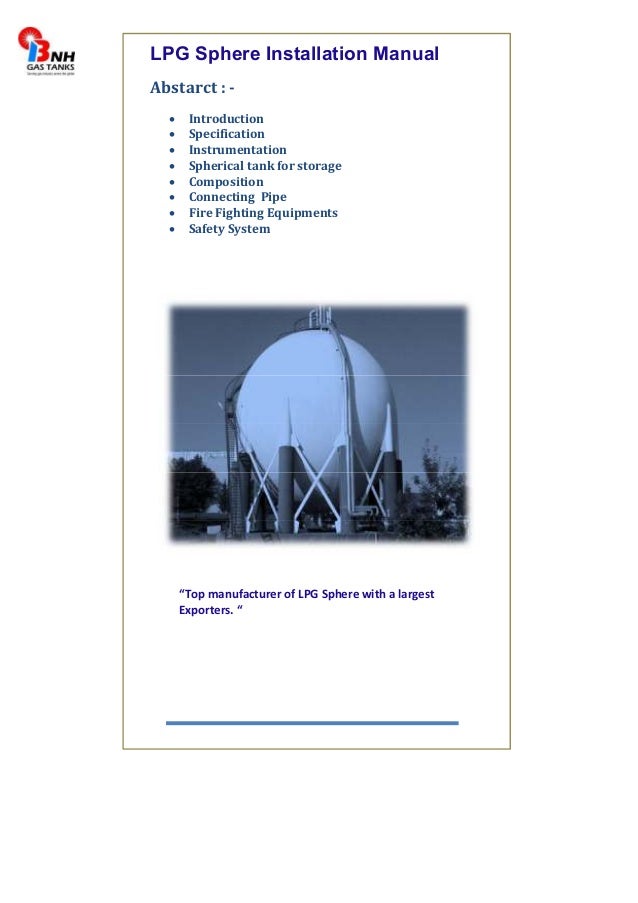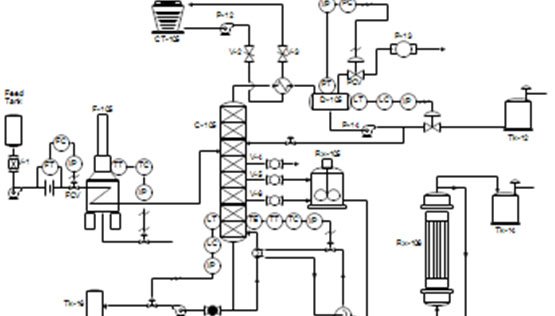Ammonia Piping Installation Manual

: References This eTool includes resources from the following organizations: • • • • • • • • Note: Standards are constantly being updated and revised. Refer to the latest version of the standard. The represents the leading companies engaged in the business of chemistry. Council members apply the science of chemistry to make innovative products and services that make people's lives better, healthier, and safer. ANSI is a private, non-profit organization that administers and coordinates the U.S. Voluntary standardization and conformity assessment system.

Ammonia Piping Installation Guide. The operator's manual for anhydrous ammonia equipment should include instructions on proper procedures to follow when handling. Home >Piping Handbook, Seventh Edition. FABRICATION AND INSTALLATION OF PIPING SYSTEMS; A7. BOLTED JOINTS. ANHYDROUS AMMONIA, AND ALCOHOLS; ASME B31.5.
• Mechanical Refrigeration and Air-Conditioning Installations Aboard Ship. Download Free Show And Prove Wiz Khalifa Zip Lock. ANSI/ASHRAE 26-1996, (1996). Provides the minimum general requirements for the design, construction, installation, operation, inspection, and maintenance of mechanical refrigeration and air-conditioning equipment aboard shipsto permit the safe, efficient, and reliable operation of such systems. ASME International is a nonprofit educational and technical organization that conducts one of the world's largest technical publishing operations, and sets many industrial and manufacturing standards. • B31.5-2001 Refrigeration Piping and Heat Transfer Components. Prescribes requirements for the materials, design, fabrication, assembly, erection, test, and inspection of refrigerant, heat transfer components, and secondary coolant piping.
• ASME Boiler and Pressure Vessel Code. Provides requirements applicable to the design, fabrication, inspection, testing, and certification of pressure vessels operating at either internal or external pressures exceeding 15 psig. Contains mandatory and non-mandatory appendices detailing supplementary design criteria, nondestructive examination and inspection acceptance standards. IIAR is an international association serving those who use ammonia refrigeration technology.
IIAR is recognized throughout industry and government around the world as the authoritative source of information about ammonia refrigeration. • IIAR Process Safety Management Guidelines for Ammonia Refrigeration.
Provides and overview of OSHA's Process Safety Management (PSM) Standard. • IIAR Ammonia Refrigeration Piping Handbook. Provides is a tutorial and reference book that represents the collective efforts of the most knowledgeable specialists in the ammonia refrigeration industry.
• IIAR Ammonia Data Book. Features resource data essential for the safe and efficient operation of any ammonia refrigeration facility. Download Born To Be Wild 1995 Calendar. Contains a revised chapter on US regulatory requirements for ammonia and other valuable compliance information about federal regulations, such as the Community Right to Know Act. • Oil Draining Guidelines. Describes procedures for safely draining oil from equipment. • IIAR Ammonia Refrigeration Library. The IIAR Ammonia Refrigeration Library is a complete set of IIAR Standards and Bulletins.
• American National Standard for Equipment, Design & Installation of Ammonia Mechanical Refrigerating Systems. Applies to closed circuit mechanical refrigerating systems using ammonia as a refrigerant. Contains information to specify equipment and machinery room design and installation for ammonia mechanical refrigerating systems. • Bulletin #R1. A Guide to Good Practices for the Operation of an Ammonia Refrigeration System. A reference document providing users of ammonia refrigeration with suggested practices for the operation of an ammonia refrigeration system.
• Bulletin No. Guidelines for: Suggested Safety and Operating Procedures When Making Ammonia Refrigeration Plant Tie-Ins.
(1997, February). Addresses the need to approach ammonia refrigeration system tie-ins in a safe and methodical manner. Provides owners and contractors with a general checklist of safety and logistical items that should be reviewed when planning system shutdowns and tie-ins.
Also provides engineers with ideas on how and where to design for future connections and taps that can make future tie-ins easier and safer. • Bulletin No. Guidelines for Water Contamination in Ammonia Refrigeration Systems. Offers insights on where the water can come from and how to minimize continued infiltration. Provides an analytical approach to quantifying water concentrations, and recommends apparatus to remove the water. • Bulletin No.
Guidelines for IIAR Minimum Safety Criteria for a Safe Ammonia Refrigeration System. (1997, October). Embraces an IIAR goal of ensuring that ammonia refrigeration systems are engineered, constructed and operated in a safe manner. Provides detailed lists of items to consider when designing, inspecting, or operating a system. Housekeeping, recordkeeping, code considerations and personnel safety equipment are some of the safety issues addressed. Also provides inspection checklist forms for compressors, condensers, evaporators, vessels and heat exchangers to check system installation against recognized industry safety requirements.